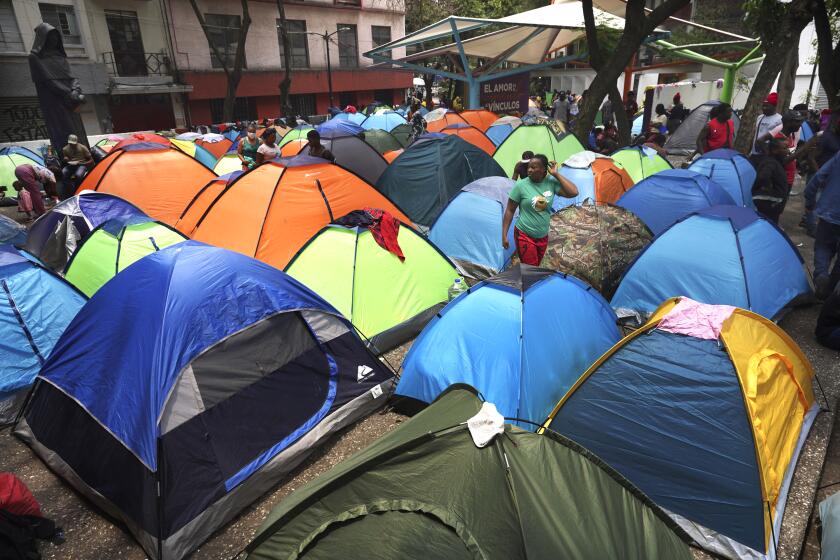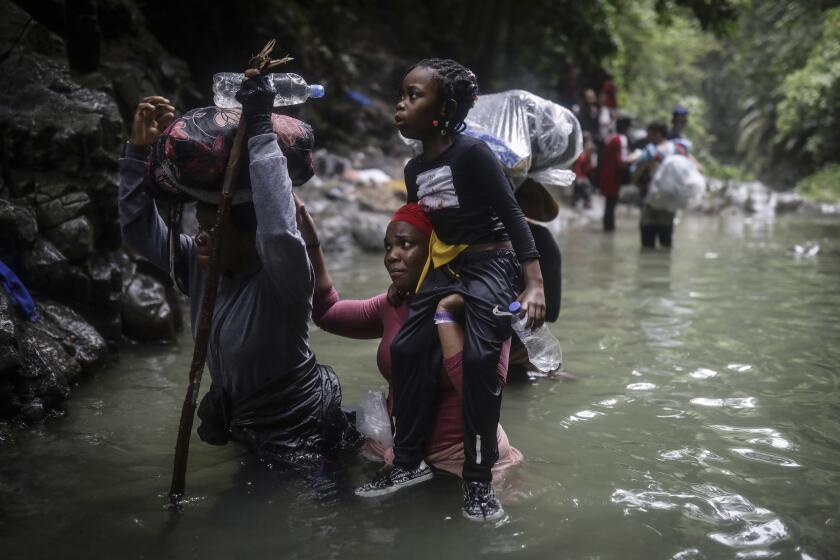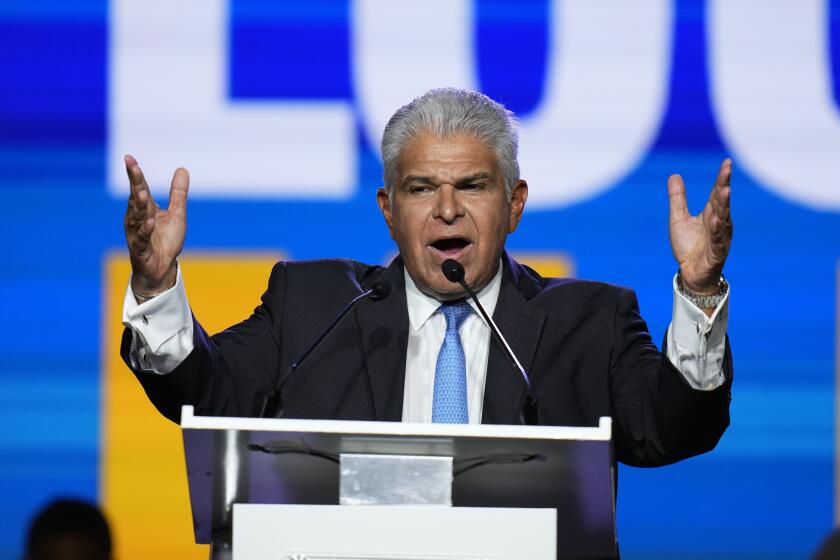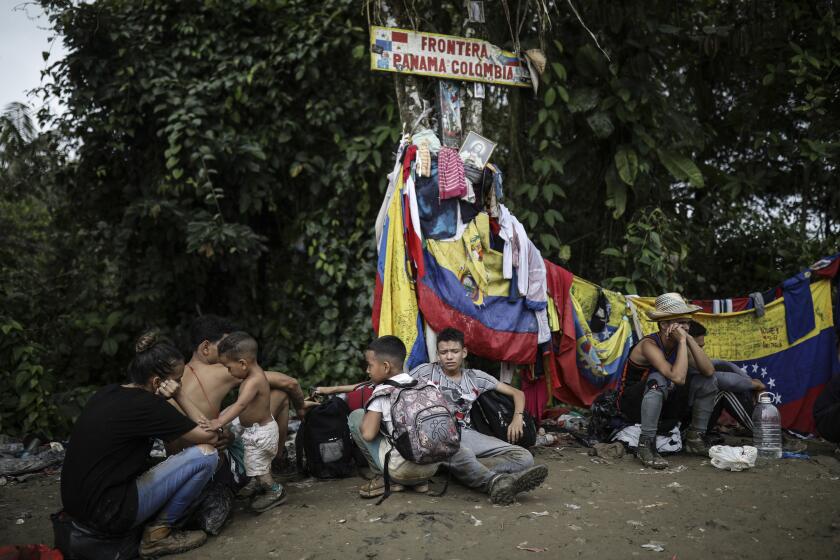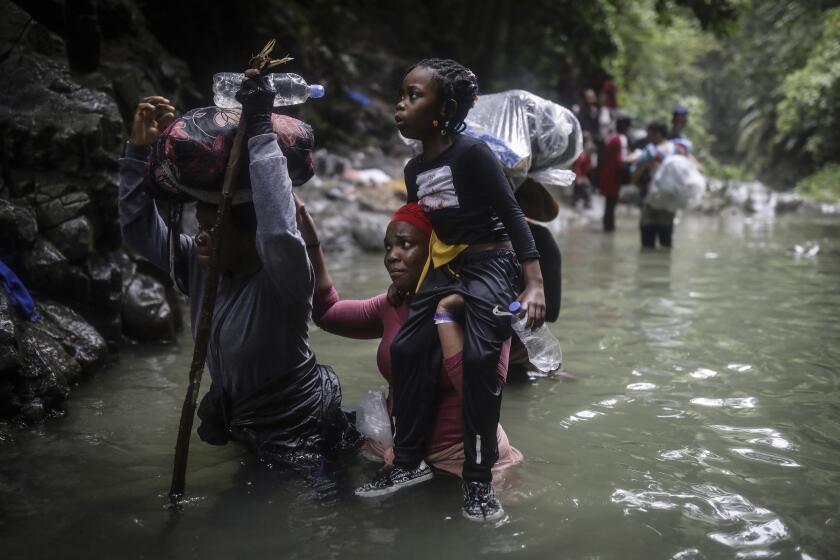Panama’s next president says he’ll try to shut down one of the world’s busiest migration routes
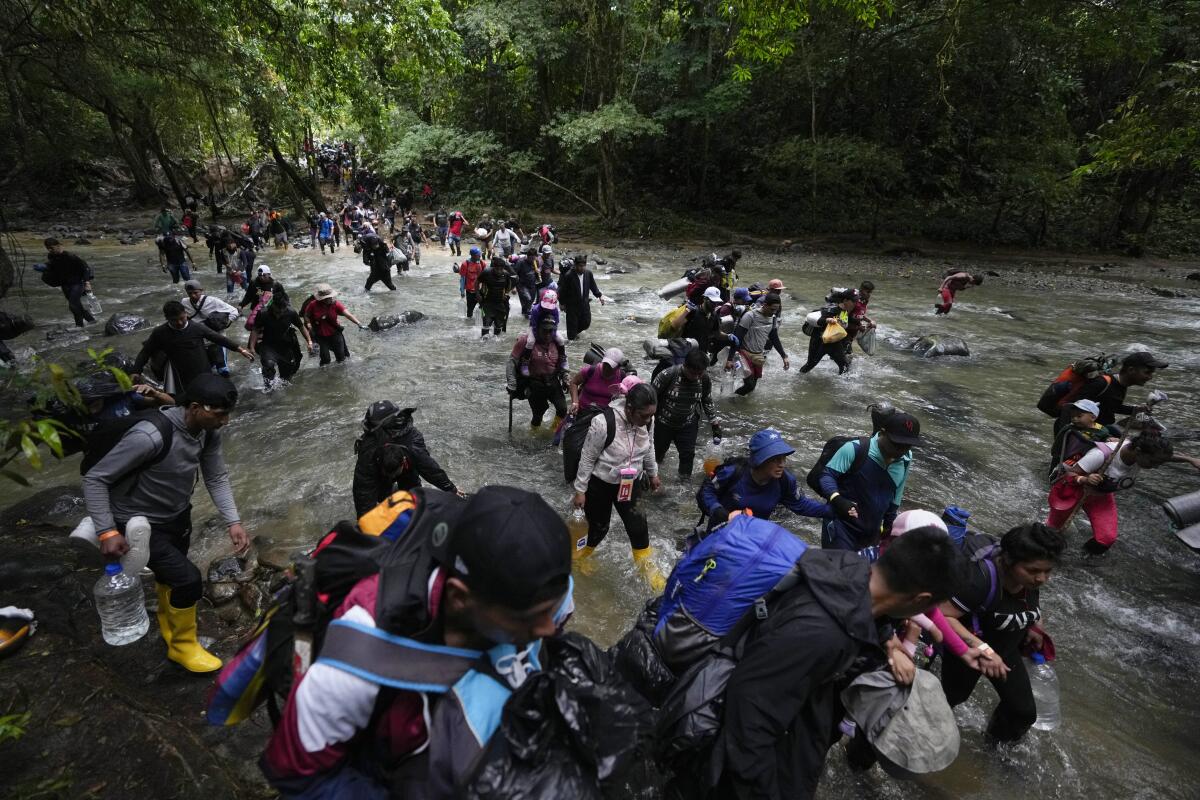
- Share via
PANAMA CITY — Panama is on the verge of a dramatic change to its immigration policy that could reverberate from the dense Darien jungle to the U.S. border.
President-elect José Raúl Mulino says he will shut down a migration route used by more than 500,000 people last year. Until now, Panama has helped speedily bus the migrants across its territory so they can continue their journey north.
Whether Mulino is able to reduce migration through a sparsely populated region with little government presence remains to be seen, experts say.
An encampment in the Juarez neighborhood of Mexico City shows how migration is impacting countries south of the U.S. border.
“Panama and our Darien are not a transit route. It is our border,” Mulino said after his victory with 34% of the vote in Sunday’s election was formalized Thursday evening. He will become president on July 1.
As he had suggested during his campaign, the 64-year-old lawyer and former security minister said he would try to end “the Darien odyssey that does not have a reason to exist.”
The migrant route through the narrow isthmus grew exponentially in popularity in recent years with the help of organized crime in Colombia, making it an affordable, if dangerous, land route for hundreds of thousands.
Human Rights Watch says migrants who cross the Darien Gap on their way to the U.S. have become increasingly exposed to robberies and sexual violence.
It grew as countries like Mexico, under pressure from the U.S. government, imposed visa restrictions on various nationalities including Venezuelans and just last week Peruvians in an attempt to stop migrants flying into the country just to continue on to the U.S. border.
But masses of people took the challenge and set out on foot through the jungle-clad Colombian-Panamanian border. A crossing that initially could take a week or more eventually was whittled down to two or three days as the path became more established and entrepreneurial locals established a range of support services.
It remains a risky route, however. Reports of sexual assaults have continued to rise, some migrants are killed by bandits in robberies and others drown trying to cross rushing rivers.
The leading candidate to be Panama’s next president is a last-minute stand-in who promises to return the Central American country to a boom time.
Even so, some 147,000 migrants have already entered Panama through Darien this year.
Previous attempts to close routes around the world have simply shifted traffic to riskier paths.
“People migrate for many reasons and frequently don’t have safe, orderly and legal ways to do it,” said Giuseppe Loprete, chief of mission in Panama for the U.N.’s International Organization for Immigration. “When the legal routes are not accessible, migrants run the risk of turning to criminal networks, traffickers and dangerous routes, tricked by disinformation.”
Loprete said the U.N. agency’s representatives in Panama would meet with Mulino’s team once its members are named to learn the specifics of the president’s plans.
The government of Panama says it will launch a new campaign to stem the flow of migrants through the dangerous, jungle-clad Darien Gap.
If Mulino could be even partially effective, it could produce a notable, but likely temporary, impact. As with the visa restrictions that unintentionally steered migrants to the overland route through Panama, if the factors pushing migrants to leave their countries remain they will find other routes. One could be the dangerous sea routes from Colombia to Panama.
In a local radio interview Thursday, Mulino said the idea of shutting down the migration flow is more philosophical than a physical obstacle.
“Because when we start to deport people here in an immediate deportation plan the interest for sneaking through Panama will decrease,” he said. By the time the fourth plane loaded with migrants takes off, “I assure you they are going to say that going through Panama is not attractive because they are deporting you.”
Panama has unveiled a new effort to control illegal migration through the treacherous Darien Gap that spans its eastern border with Colombia.
Julio Alonso, a Panamanian security expert, said what Mulino could realistically achieve is unknown.
“This would be a radical change to Panamanian policy in terms of migration to avoid more deaths and organized crime using the route,” he said. Among the challenges will be how it would work operationally along such an open and uncontrolled border.
“In Panama, there is no kind of suppression with this situation, just free passage, humanitarian aid that didn’t manage to reduce the number of assaults, rapes, homicides and deaths along the Darien route,” Alonso said. Mulino’s proposal is “a dissuasive measure, yes, [but] whether it can be completely executed we will see.”
Get up to date on the latest immigration news, policy changes and other developments out of LA, California, and around the world.
It’s also unlikely that much could be accomplished without a lot of cooperation and coordination with Colombia and other countries, he said.
Adam Isacson, an analyst at the Washington Office on Latin America, said that “without considering the risk of returning migrants to dangerous situations, in mathematical terms I don’t know how they hope to massively deport” migrants.
“A daily plane, which would be extremely expensive, would only repatriate around 10% of the flow (about 1,000 to 1,200 per day). The United States only manages to do about 130 flights monthly in the entire world,” Isacson said.
Solis writes for the Associated Press.
More to Read
Sign up for Essential California
The most important California stories and recommendations in your inbox every morning.
You may occasionally receive promotional content from the Los Angeles Times.
